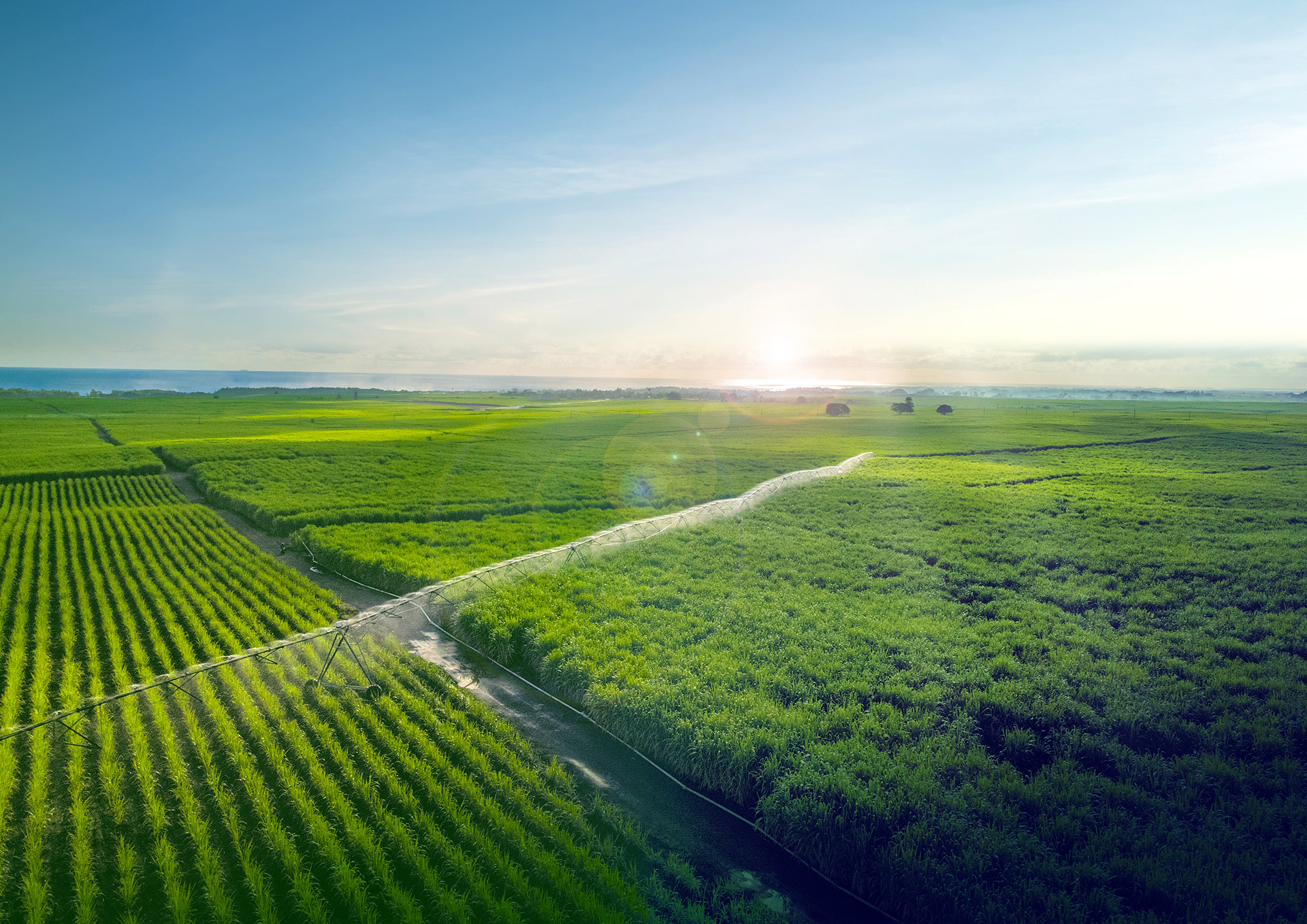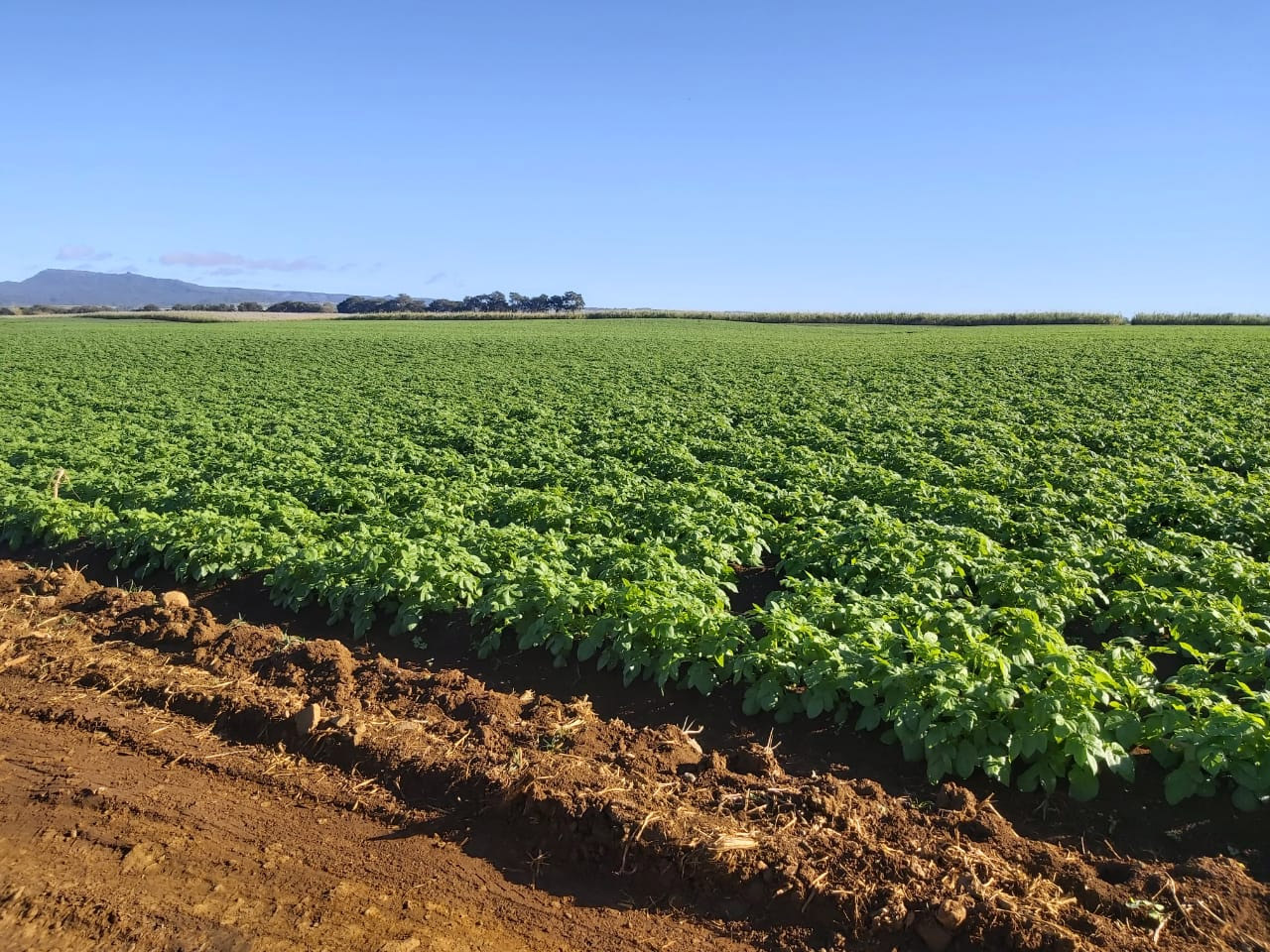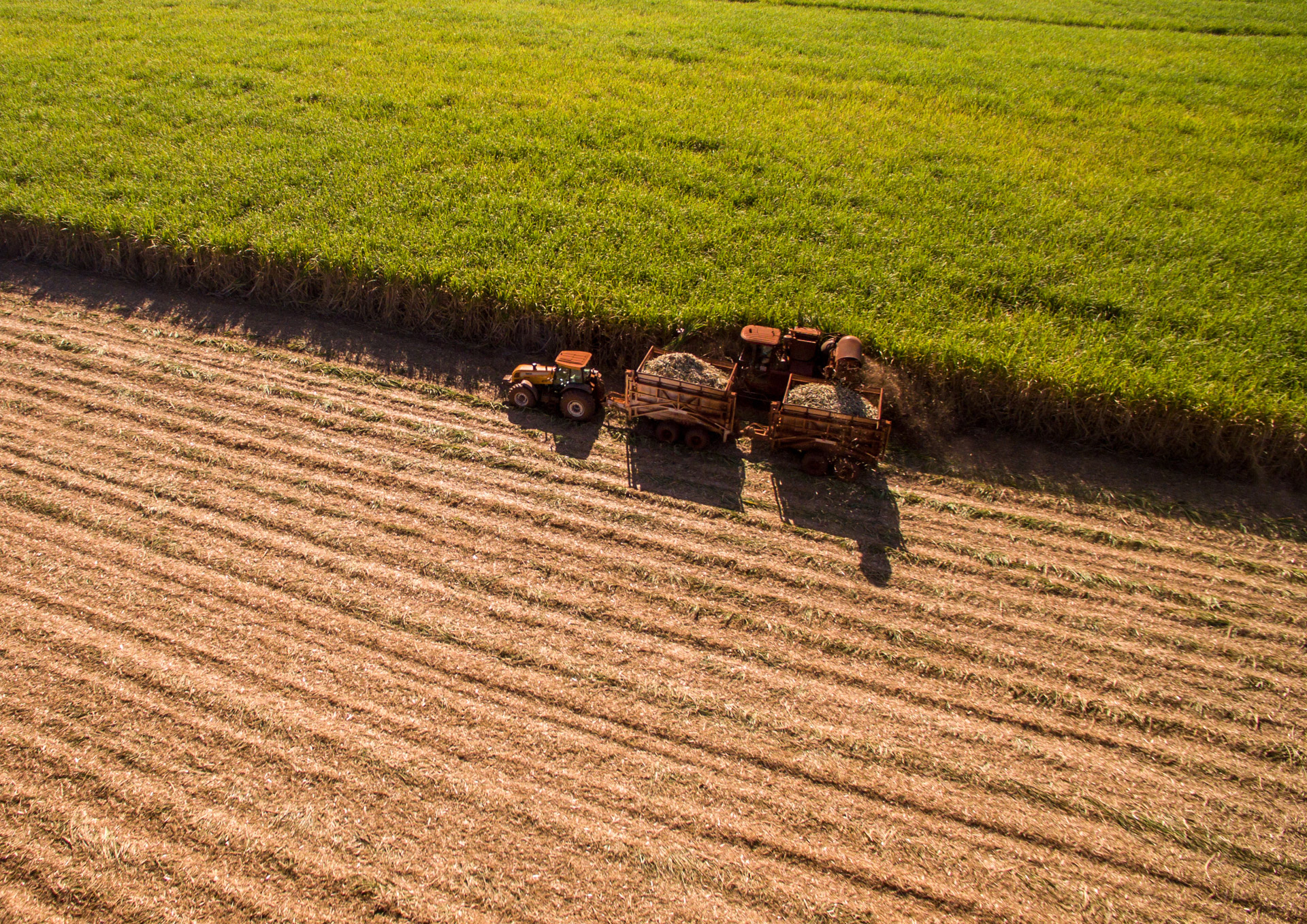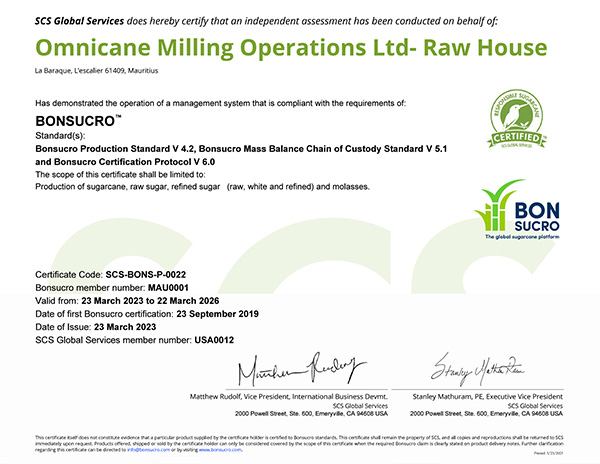Agri
Agriculture is deeply rooted in our DNA. Our 2,250 hectares of sugarcane fields are one of the pillars of our circular economy model. As pioneers in the sugarcane industry, we have developed good agricultural practices over centuries, embracing sustainable approaches, delivering high-quality sugar while respecting the environment. We have developed expertise in field planning, land preparation and sustainable planting techniques. We follow recommendations of the Mauritius Sugar Industry Research Institute (MSIRI) with regards to the selection of the best cane varieties. Moreover, most of our sugarcane harvesting is done mechanically using specialised industrial equipment for maximum efficiency.
In line with the country’s food security objectives, on top of sugar, we are also involved in vegetable production, mainly potato cultivation. From the 70 hectares of land under cultivation, we produce about 1,800 tonnes of potatoes annually for local consumption.
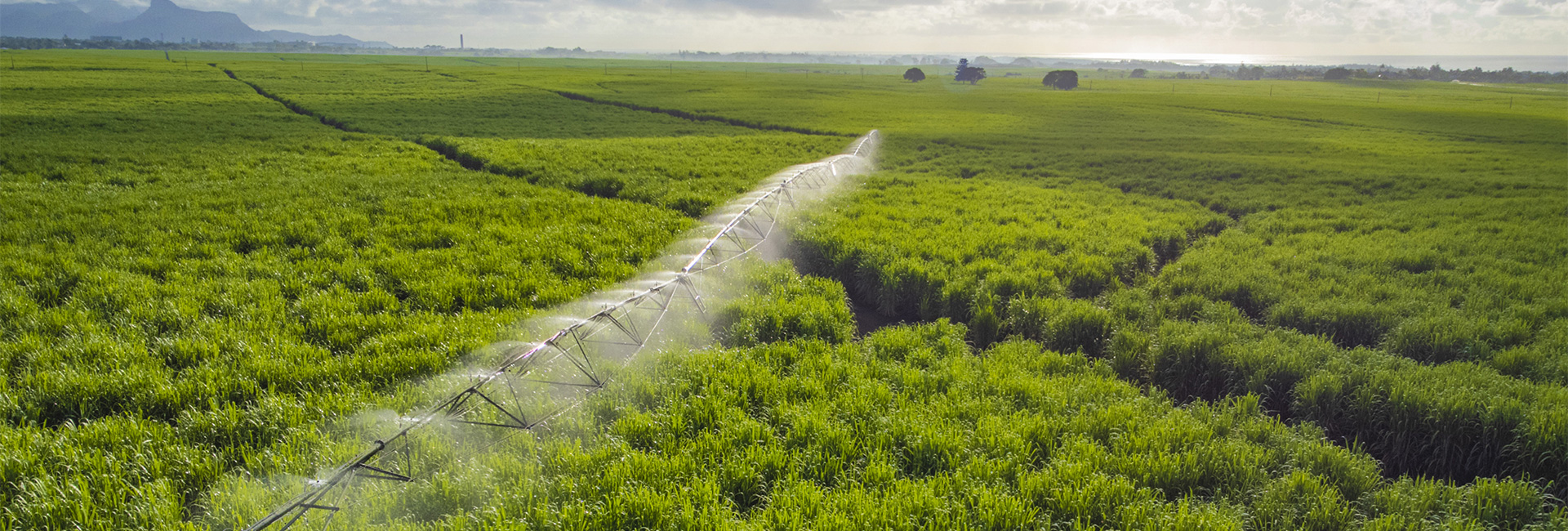
Omnicane envisions to increase its area under cane cultivation by studying the possibility of centralised cane management through strengthened partnerships with neighbouring corporate planters. We further look into leveraging our natural by-products such as scums, concentrated molasses stillage (CMS) for fertilisation purposes.

-20.470660044516, 57.62683578383
Omnicane Limited - Agricultural Operations
La Baraque, L’Escalier 61409,
Republic of Mauritius
E: agri@omnicane.com
T: +230 626 2532
